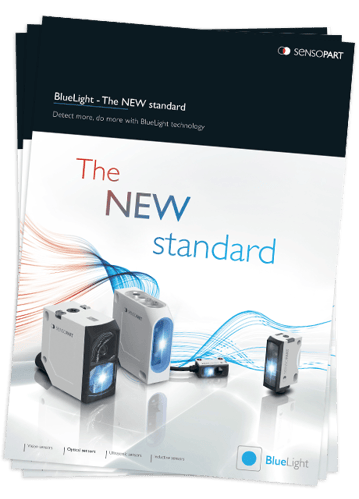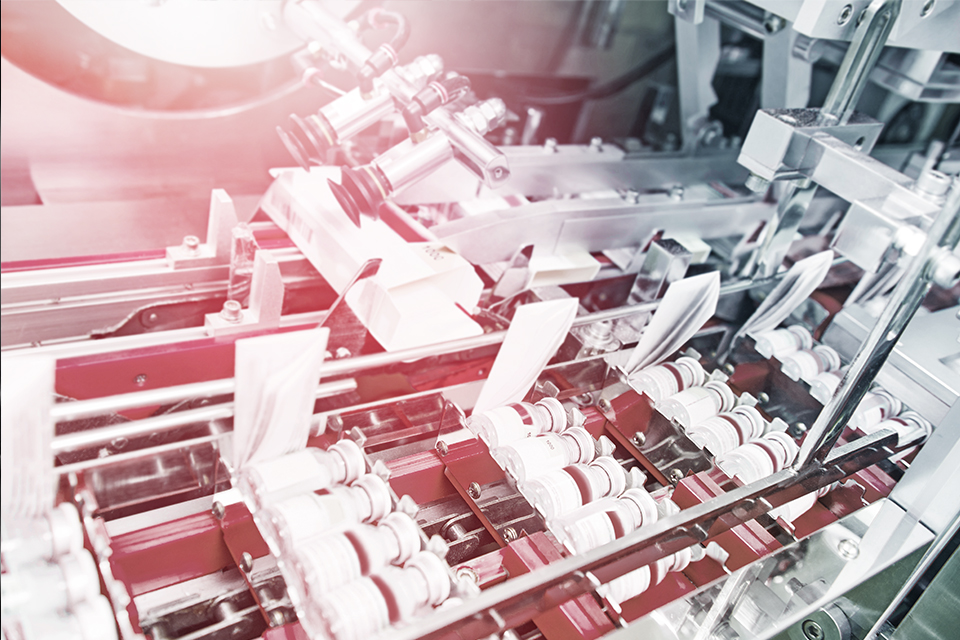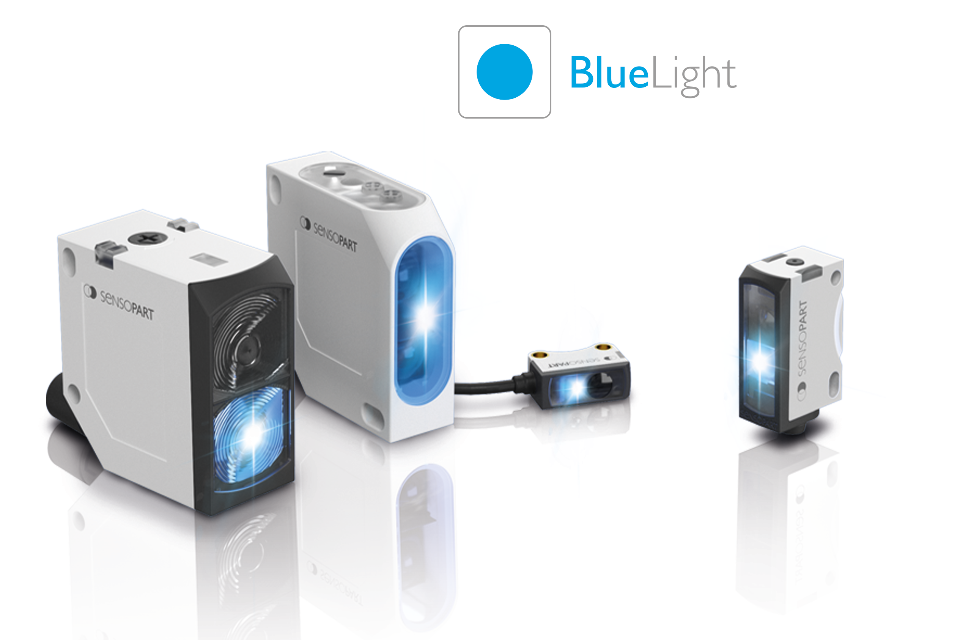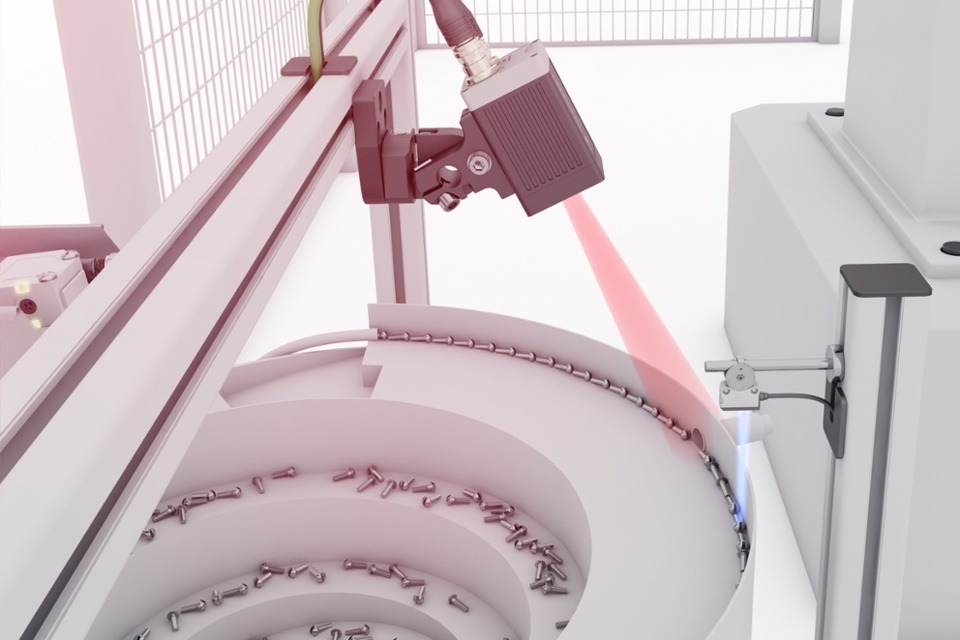What is BlueLight?
Blue light is a part of the visible light spectrum that has a shorter wavelength and higher energy than other colours such as red or green. This makes it ideal in the field of optical sensors (as a blue emitting LED) because with innovative BlueLight technology, it can be reliably used to detect simple objects on the one hand and objects that are difficult to detect on the other.
Objects are usually considered difficult to detect if they send little or hardly any light back to the receiver. These include, for example, dark, shiny, transparent parts or objects that are at a strong angle of inclination to the sensor.
The reason for BlueLight’s more reliable detection is its higher intensity on the surface of the object to be sensed. The penetration depth of the short-wave blue light is lower than that of red light resulting in more light returning to the sensor. Especially with dark, shiny, curved and even transparent surfaces.
What is BlueLight technology?
Red light sensors are used in many applications in industrial automation. However, ordinary red light sensors reach their limits when it comes to detecting difficult surfaces, often resulting in many – potentially very costly – errors going unnoticed until it's too late. In addition, their process stability decreases at strong angles of inclination.
BlueLight sensors can handle multiple problems at once such as black objects with a high gloss surface at a shallow detection angle. But perhaps most impressively, they even have the high-precision ability to suppress very bright or reflective backgrounds, making them an essential solution for many industrial applications.
What problem in the market was this technology designed to solve?
The emergence of BlueLight sensors can be traced back to 2014 when SensoPart was tasked with detecting solar wafers in solar panels. The very nature of these silicon cells is to absorb as much light as possible, thereby making them virtually undetectable by traditional red light sensors. The SensoPart team discovered that the detection of the dark blue solar wafers with a blue light sensor worked much more reliably, because the solar cells have a higher reflectivity in the blue range. Object detection with blue light was born.
It quickly became apparent that all industries could benefit from this new technology because in many automated processes, sensors must reliably detect deep black, reflective, curved, angled, shiny and transparent objects. In addition, blue light sensors were found to reliably detect even at large angles to the object, often the case with limited installation space.
Today, BlueLight sensors can easily be used as the new standard as they enable a significantly higher process reliability than red light sensors in the detection of
demanding materials.

Detection of very dark objects
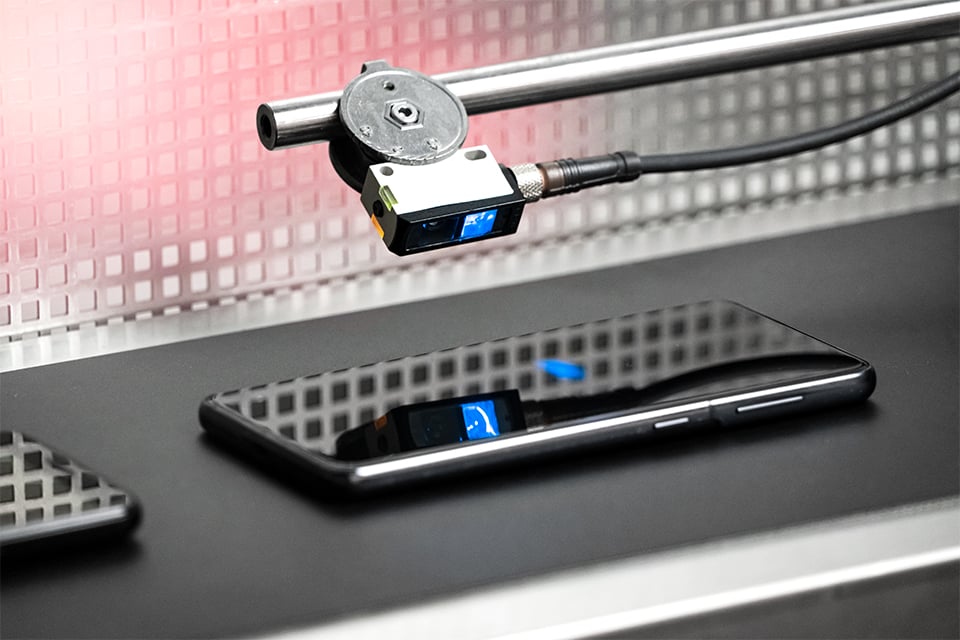
Reliable detection of reflective surfaces

Detection of transparent objects
What are the benefits of BlueLight?
BlueLight sensors can handle multiple problems at once such as black objects with a high gloss surface at a shallow detection angle. But perhaps most impressively, they even have the high-precision ability to suppress very bright or reflective backgrounds, making them an essential solution for many industrial applications.
- Process reliability
Blue light sensors can reliably detect difficult surfaces: deep black, reflective, curved, slanted, shiny and transparent. - Robustness
Even when mounted laterally at strong angles for space reasons, BlueLight sensors still ensure high process stability. - Flexibility
If the objects to be detected in a system are changed, BlueLight sensors offer the highest flexibility in critical object detection. - Warehouse optimisation
BlueLight sensors solve both standard and problem applications allowing for red light sensors to be dispensed with to save space.
FACT
In automated industrial processes sensors are challenged with reliability. They must detect deep black, reflective, curved, angled, shiny and transparent objects. Blue light sensors are proven to detect reliably, even at large angles in relation to the object, even when faced with the difficulty of operating with limited installation space. BlueLight sensors enable a significantly higher process reliability than red light sensors and are therefore used for the detection
of demanding materials.
Interested on finding out how BlueLight technology is applicable to your industry? Sign-up to our newsletter and don't miss out on our updates.
What types of industries benefit from BlueLight technology?
BlueLight sensors solve a wide range of applications and can consequently be used successfully in many different fields. In the automotive industry, the proportion of difficult surfaces is very high. Potentially critical plastic and metal parts, from matt black door trim to high-gloss, round gear knobs, must all be reliably detected. The sensors also ensure extremely reliable detection of transparent objects, such as bottles, and packaging films for the food industry, along with sample tubes, syringes and pipette tips for the pharmaceutical industry.
Typical industries:
- Automotive
Detection of metallic and highly light-absorbing components - Packaging
Detection of transparent films / containers / bottles and labels - Pharmaceutical
Presence and positioning of shiny blister packs - Solar
Detection of presence and position of wafers
